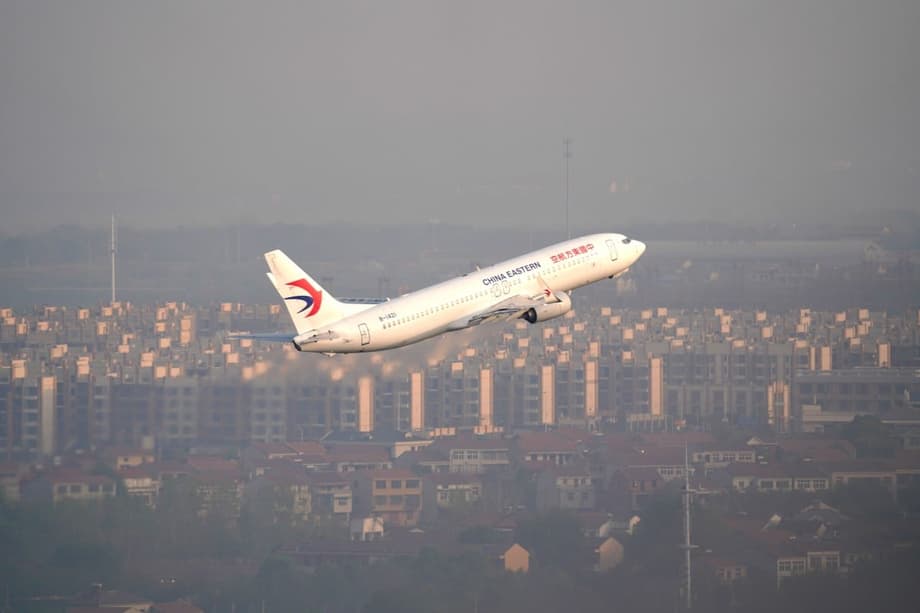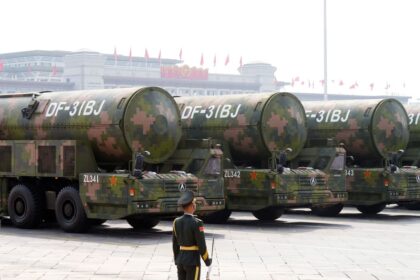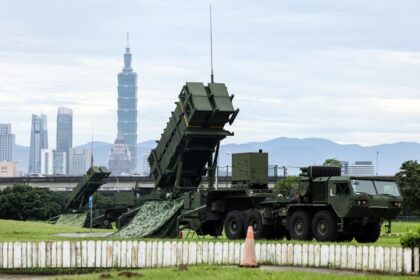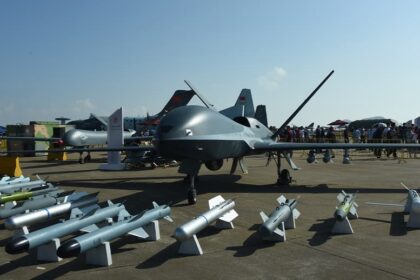Why airlines are giving WiFi away now
China’s biggest carriers are offering free WiFi on more domestic flights in a direct bid to win back business travelers from high speed rail. On October 11, China Eastern Airlines switched on free basic WiFi across all widebody aircraft that operate domestic routes. The program covers 37 city pairs that connect major hubs including Beijing, Shanghai, Chengdu, Kunming, and Wuhan. Air China and China Southern Airlines already offer free connectivity on a portion of their domestic fleets, and are expected to expand coverage as customer expectations shift.
- Why airlines are giving WiFi away now
- What China Eastern is rolling out
- How Air China and China Southern are responding
- High speed rail sets a high bar for connectivity
- Business travel habits shift to work from the air
- Technology behind in flight internet in China
- Taiwan based China Airlines joins the free WiFi trend
- Pricing, punctuality, and the flight versus rail choice
- Highlights
Business travelers have flocked to bullet trains in recent years because they can work online from departure to arrival, trains run frequently, and stations sit in city centers. On key corridors such as Beijing to Shanghai, the door to door journey often rivals a flight once airport transfers, security, boarding, and potential delays are included. Airlines have faced pressure on yields and reported losses in the first half of the year, so enticing high value travelers back with always on connectivity has become a priority.
What China Eastern is rolling out
China Eastern’s new offer is designed to make domestic flights feel more like a moving office. The airline calls it a basic service that supports common tasks that matter to business travelers. The move follows a trial in August that drew strong feedback, and it targets routes where demand from corporate travelers is strongest.
Coverage and routes
The free service is available on widebody aircraft flying within China. Those jets serve 37 routes between some of the country’s busiest cities, including the capital region and the Yangtze River Delta. Coverage includes Beijing, Shanghai, Chengdu, Kunming, and Wuhan. The scope is expected to expand as more aircraft are equipped and utilization patterns become clearer.
What passengers can do online
Passengers can browse the web, check email, access cloud documents, and use popular messaging apps. High bandwidth activities such as video streaming are often restricted to keep the connection stable for everyone on board. Performance varies with aircraft type, satellite coverage, and weather, so the experience can be closer to a good mobile hotspot on some flights and more limited on others. Most airlines use a simple captive portal accessed through a browser, which avoids the need to download an app before boarding.
How Air China and China Southern are responding
Both Air China and China Southern already provide free WiFi on a subset of domestic flights. Availability depends on aircraft equipment and route, and both carriers continue to retrofit cabins with connectivity hardware. Free access is often offered at a basic level that covers email, messaging, and light browsing.
These service upgrades complement a broader digital push. The Big 3 now allow mutual ticket sales across their mobile apps for many domestic routes. A traveler browsing one carrier’s app can often purchase a seat on a partner’s flight without leaving the app. The goal is to keep frequent flyers inside each airline’s ecosystem, improve schedule flexibility, and reduce reliance on third party platforms. Deeper app features, such as bundled car hailing, high speed rail bookings, hotel reservations, and visa services, are being added to make travel planning feel seamless.
High speed rail sets a high bar for connectivity
China operates the world’s largest high speed rail network, stretching beyond 40,000 kilometers and linking almost every major city. Trains on flagship routes run at up to 350 km per hour with dense schedules. Stations sit close to central business districts, security procedures are swift, and boarding times are short. The combination cuts total travel time, especially on trips of 500 to 1,200 kilometers, where the train can compete closely with the plane.
Connectivity has been a major advantage for rail. Passengers have used onboard WiFi for years, and mobile networks cover most corridors. It is common to see travelers in business attire working on laptops, attending audio conferences, or filing expense reports during the journey. That reliable connection has eroded one of air travel’s traditional strengths for business customers, the ability to use time in transit efficiently. Airlines are now trying to close that gap.
Business travel habits shift to work from the air
Corporate travel patterns have changed since remote work tools went mainstream. Travelers want to leave a city after a morning meeting, dial into a video call from the seat, and arrive in time for an afternoon site visit. Airlines that offer reliable connectivity can turn flight time into productive time, which makes a difference when companies compare travel modes for short notice trips.
A China Eastern representative, who spoke on condition of anonymity under company rules, described the shift with a phrase that is already catching on among regular flyers.
“We have had work from home, and now a lot of business travelers are changing the phrase to work from the air.”
That ambition depends on predictable connections rather than peak speeds. Email sync, messaging, document editing, and web based business tools are the core use cases. Travelers do not need cinema quality video to be productive, and airlines can manage bandwidth by deprioritizing streaming and large downloads.
Technology behind in flight internet in China
Modern aircraft connect to the internet through antennas mounted on the fuselage or the top of the cabin inside a streamlined radome. These antennas link to satellites that cover national airspace, and the plane distributes the connection through WiFi access points in the cabin. The service is similar to a cafe hotspot, with additional routing and optimization to account for motion and handoffs.
Speeds depend on many factors, including satellite capacity, how many passengers are online, and whether the aircraft is flying through heavy weather. Connections are usually strong enough for email, messaging apps, cloud documents, and most websites. Airlines often restrict or throttle video streaming and large file transfers so every passenger gets a stable experience. Latency is higher than on the ground because signals travel to space and back, so real time video meetings can work but may feel less responsive than a home connection.
Rules and reliability
China’s regulator began allowing smartphones in flight mode in 2018, which opened the door for wider adoption of onboard connectivity. Airlines have since accelerated retrofits and equipment upgrades. Reliability continues to improve as more aircraft get newer antennas and as satellite coverage over domestic routes expands. Passengers should expect variations by route and aircraft type, and they should still plan offline backups for critical work.
Taiwan based China Airlines joins the free WiFi trend
The competitive push to connect travelers is not limited to the mainland. Taiwan’s flag carrier, China Airlines, announced free inflight connectivity across select fleets starting August 1. The program covers Airbus A350-900 and A321neo, as well as Boeing 777-300ER aircraft, on both regional and long haul routes. The carrier says business class and premium economy travelers will receive unlimited web browsing. Economy passengers can use popular messaging apps at no cost. Elite members in its Dynasty Flyer program get unlimited browsing regardless of cabin.
Older aircraft that are due to retire will not receive the new connectivity service. Those jets offer a wireless entertainment portal, called Fantasy Sky, that streams movies, TV shows, music, and flight information to personal devices. The broader message is the same across the region. Travelers expect to be connected, and airlines are investing in equipment and software to meet that expectation.
Pricing, punctuality, and the flight versus rail choice
WiFi alone does not determine whether a traveler books a flight or a train. Price, punctuality, and total travel time still drive most decisions. On dense corridors such as Beijing to Shanghai, the train’s combination of frequency and city center access is a powerful draw. Security and boarding for rail are simpler, and arrival stations sit close to major business districts. The journey can feel less stressful than navigating two airports.
Flights sometimes retain an edge on routes that stretch beyond the core high speed grid, or where direct air service connects cities that would require train transfers. Air also dominates at very long distances where a rail journey would take most of the day. Airlines are sharpening their digital offerings, from mutual ticket sales to better disruption notifications, to make the flight experience smoother. Free connectivity becomes one more reason to choose a plane when the schedule is tight or when the destination is outside the reach of the fastest rail lines.
Rail and air often complement each other. Many airports are now linked directly to high speed lines, and travelers use trains to reach long haul flights. The result is a more flexible door to door journey, with the mode chosen for each segment. As airlines narrow the connectivity gap, the decision starts to hinge on schedule, proximity to stations or airports, and personal preference.
Highlights
- China Eastern launched free basic WiFi on October 11 across all widebody aircraft flying domestic routes, covering 37 city pairs
- Air China and China Southern offer free WiFi on a share of domestic flights and are expanding coverage as more aircraft are equipped
- High speed rail’s reliable onboard connectivity, frequency, and city center access have pulled business travelers from short haul flights
- Chinese airlines reported first half losses and see free connectivity as a way to win back high value customers
- Onboard internet supports email, messaging, and web browsing, while streaming is often restricted for stability
- China’s regulator allowed smartphones in flight mode in 2018, enabling broader adoption of inflight connectivity
- Taiwan’s China Airlines will provide free connectivity across A350, A321neo, and 777 fleets, with unlimited browsing for premium cabins and messaging for economy
- Mutual ticket sales across the Big 3 airline apps aim to keep travelers inside airline ecosystems and improve schedule flexibility
- Travelers will still weigh price, punctuality, and door to door time, with rail and air often used together for complex trips












